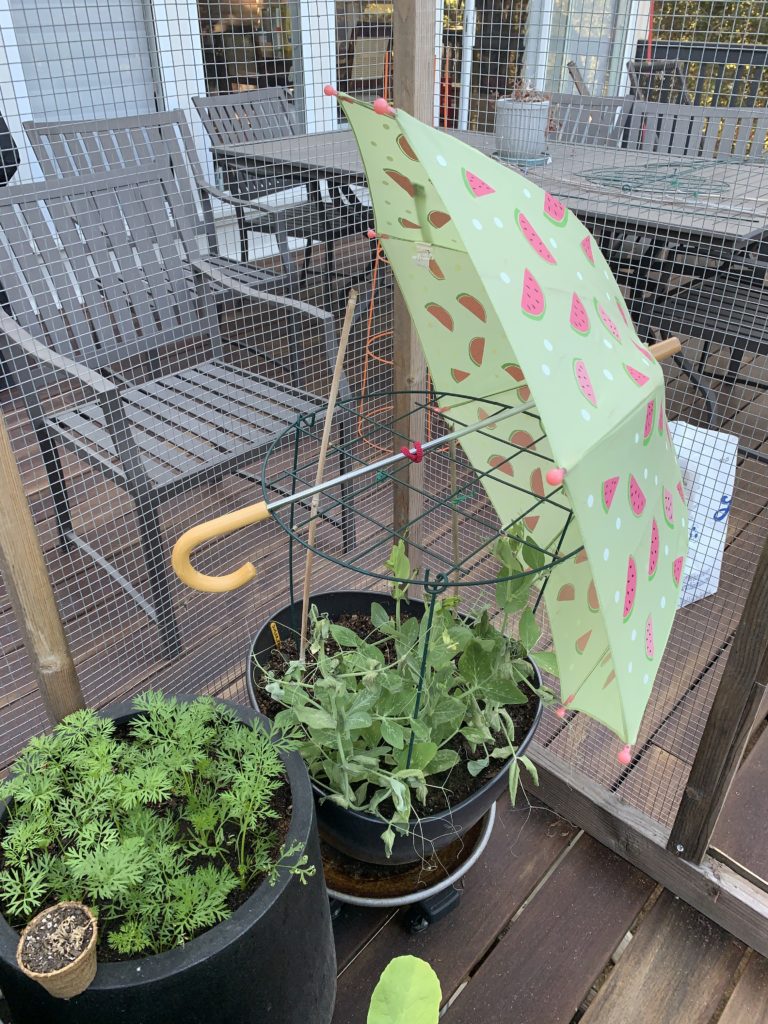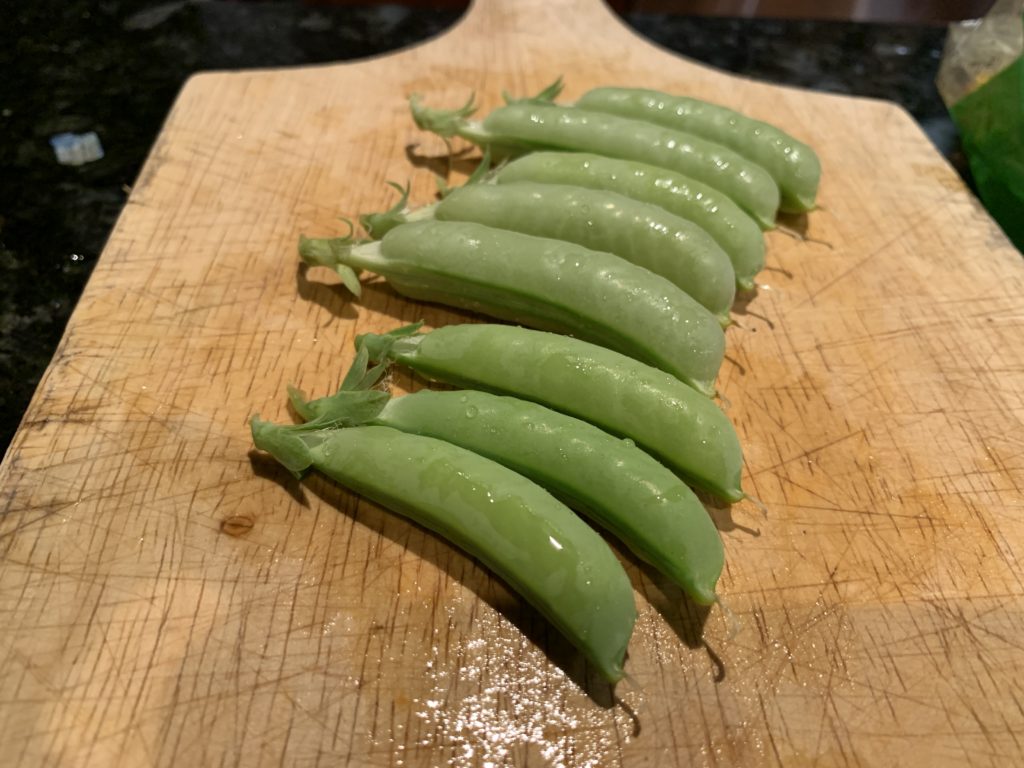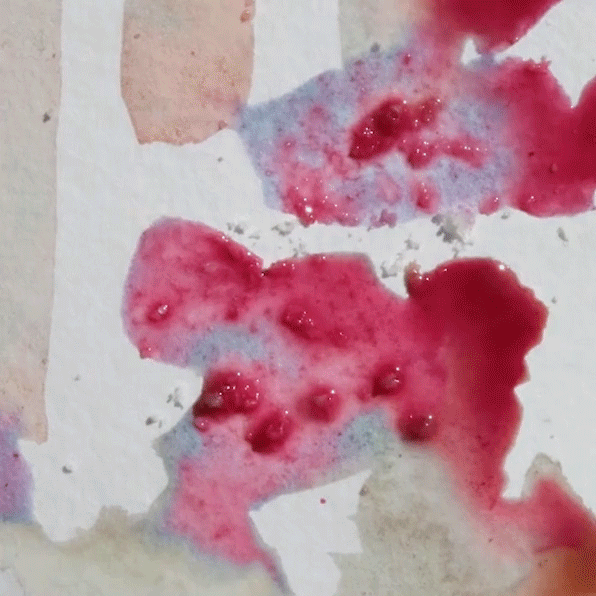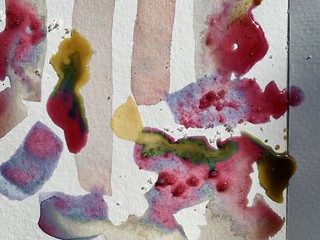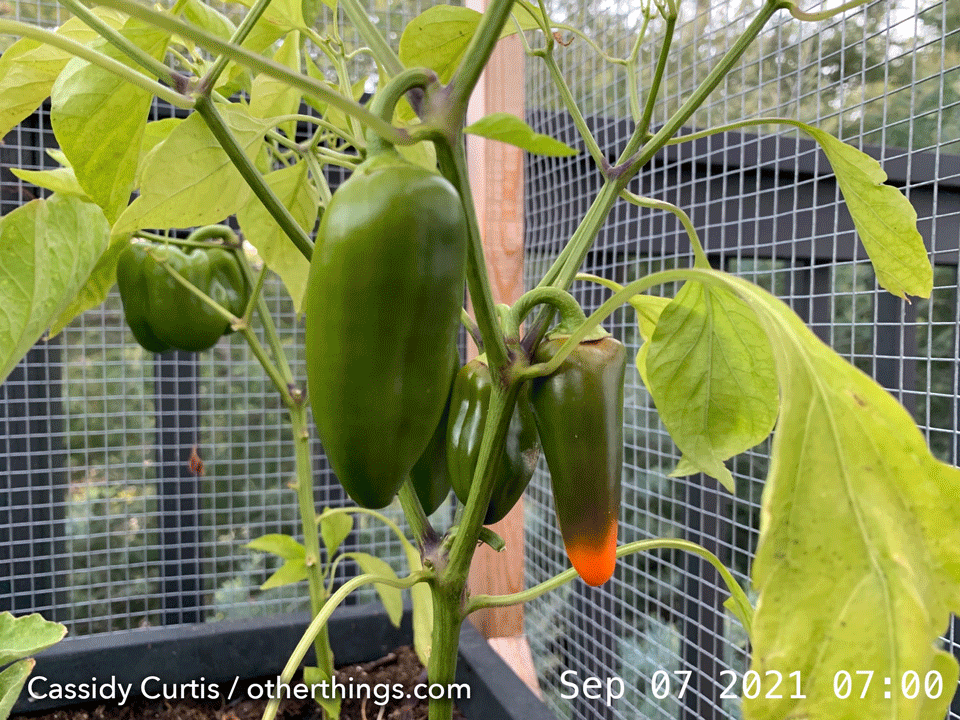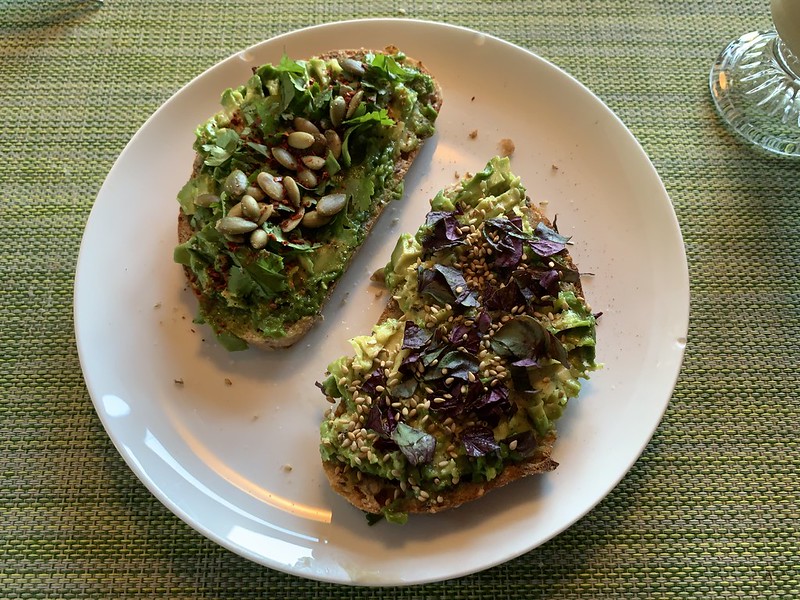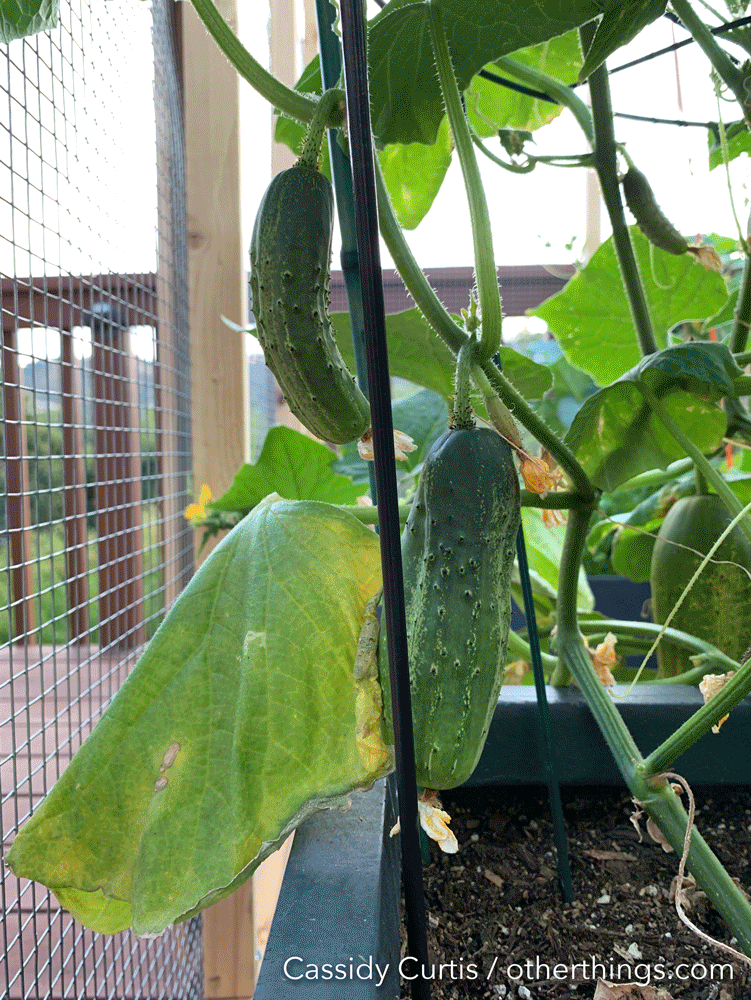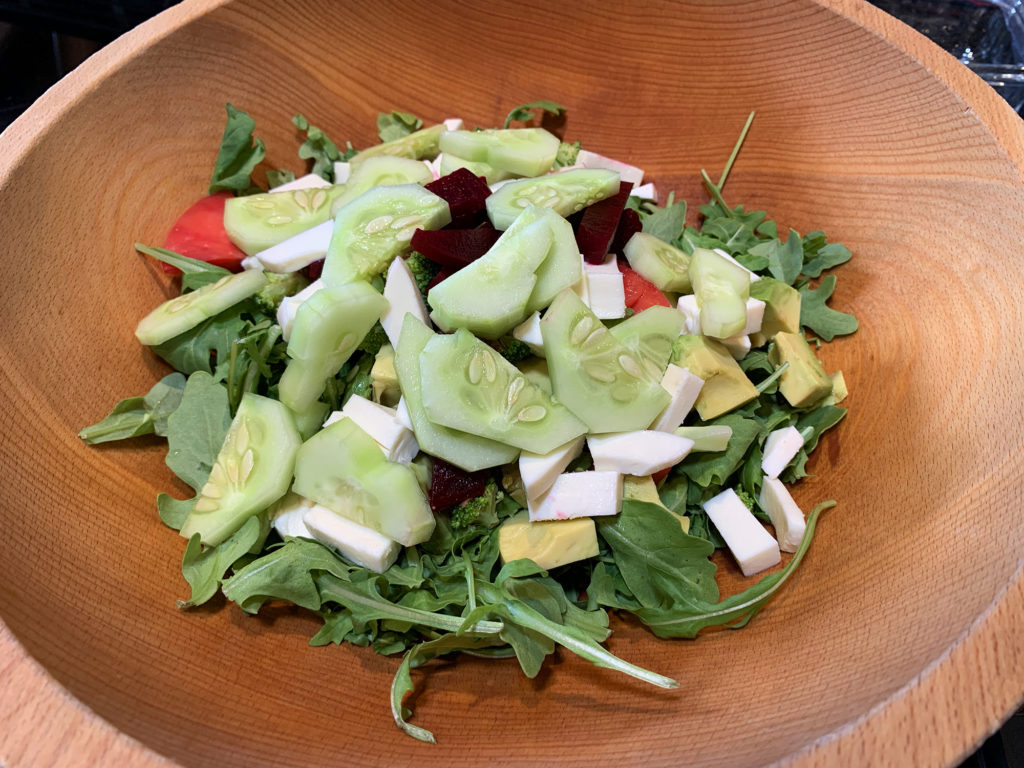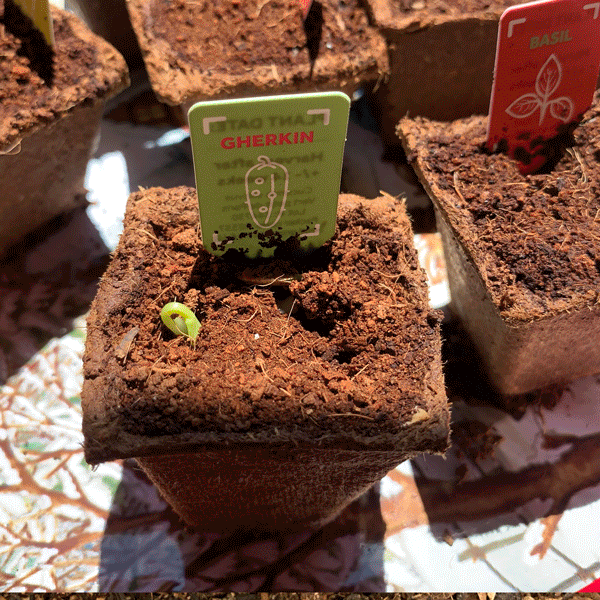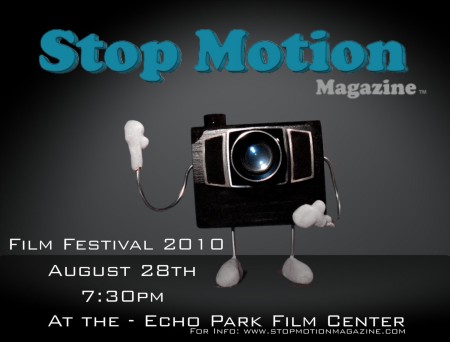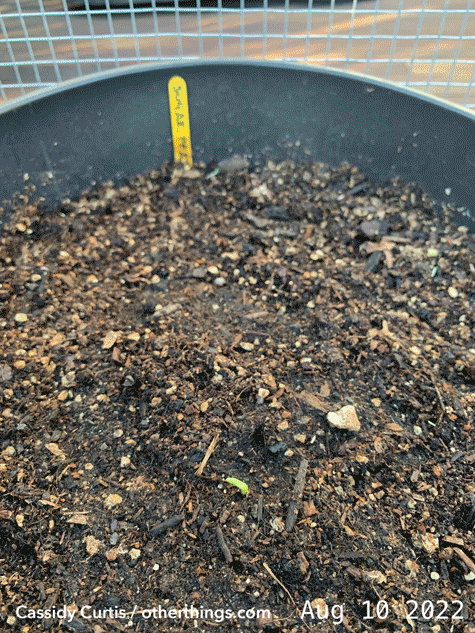
I’ve continued to shoot timelapse video of the various veggies we grow in the garden. Here’s one more from last fall, of some sugar snap peas. They grew so fast I had to shoot twice a day! I was blown away by the origami-like way each pair of leaves unfolds as the vines grow, and the branching tendrils that whip out and grab on to whatever they can find. You might also notice some sudden changes in early September: we had a brutal heat wave that almost killed the plants. Some quick thinking and an old kid-sized umbrella saved them from total destruction. Not all of the plants survived, but the ones that made it produced crunchy pods as sweet as candy. Will definitely grow these again!
